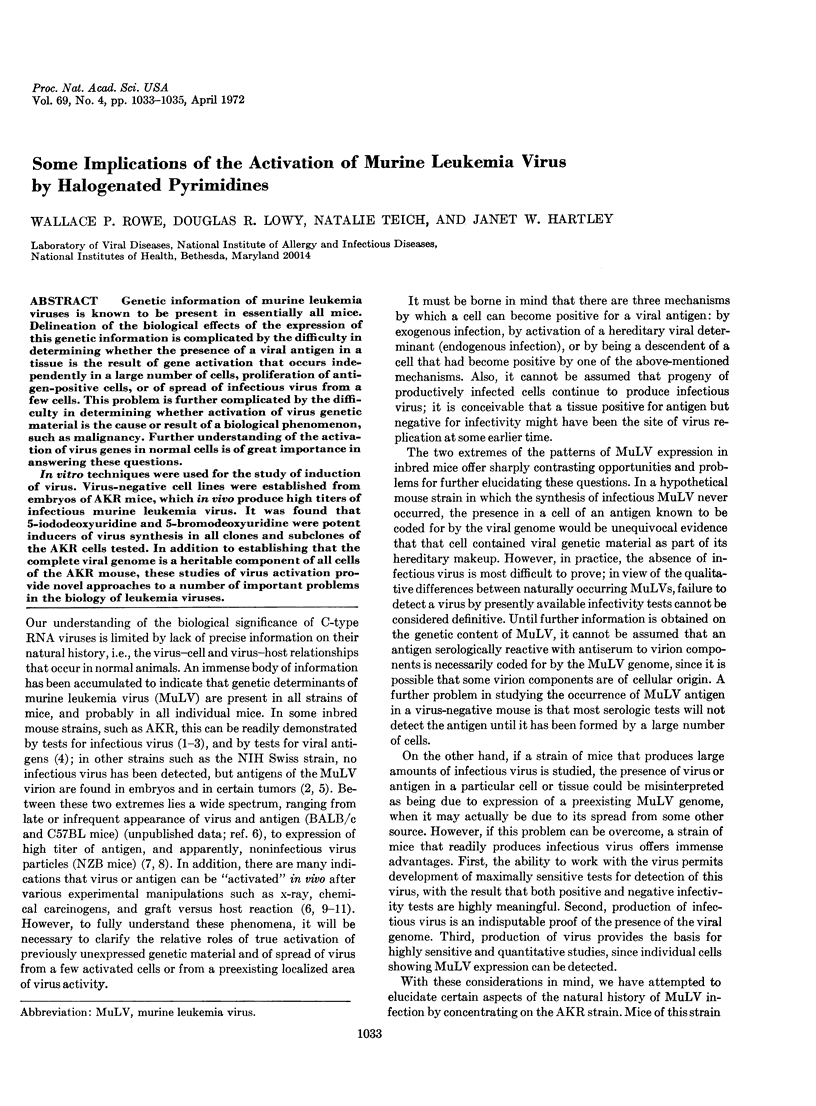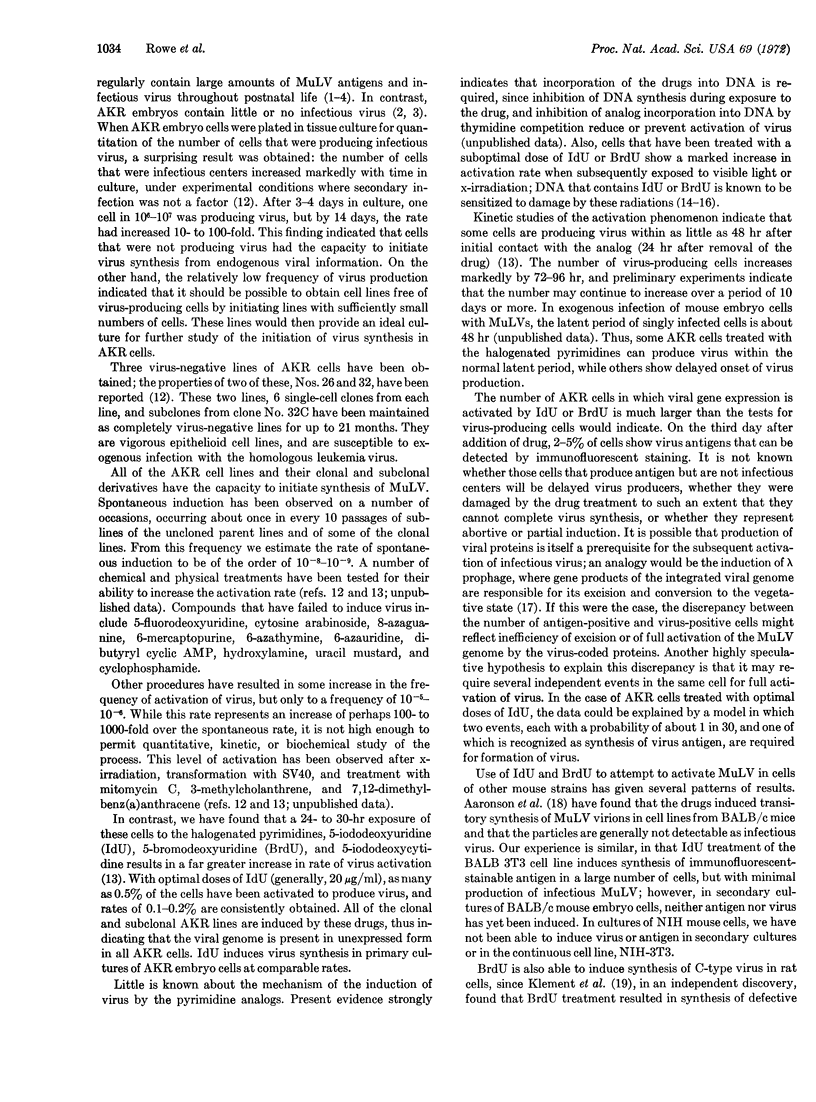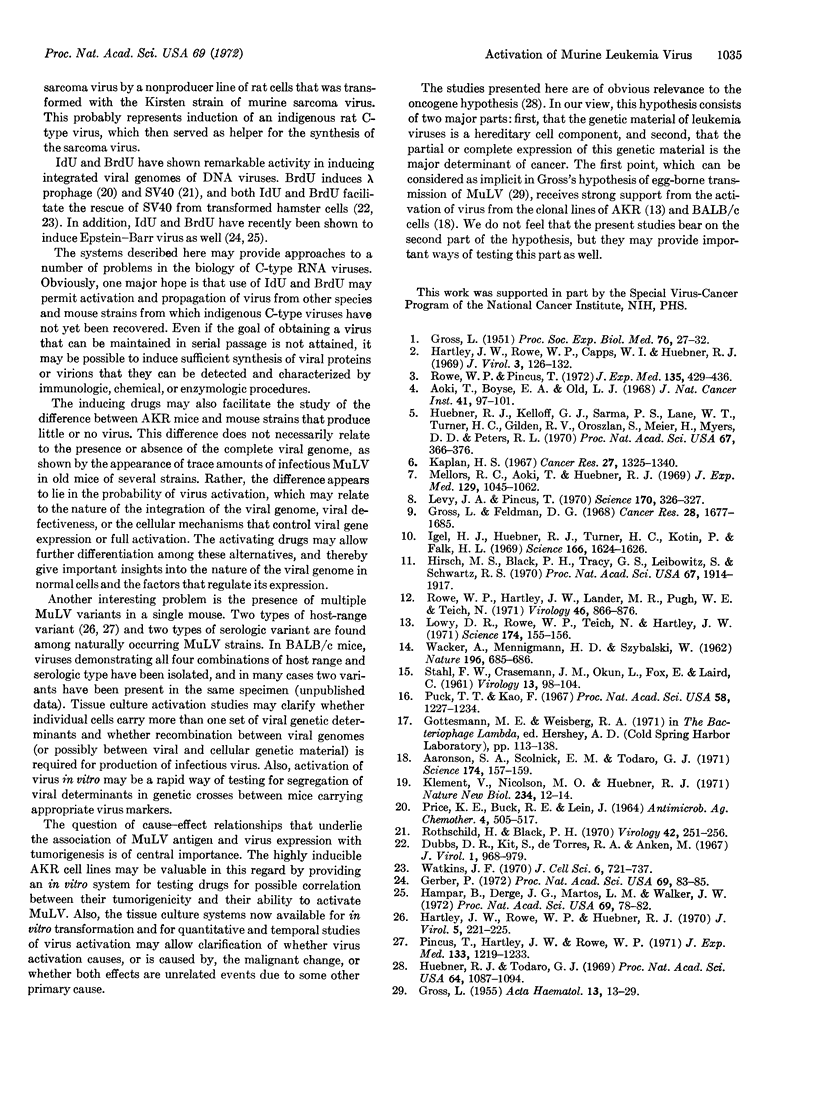Abstract
Genetic information of murine leukemia viruses is known to be present in essentially all mice. Delineation of the biological effects of the expression of this genetic information is complicated by the difficulty in determining whether the presence of a viral antigen in a tissue is the result of gene activation that occurs independently in a large number of cells, proliferation of antigen-positive cells, or of spread of infectious virus from a few cells. This problem is further complicated by the difficulty in determining whether activation of virus genetic material is the cause or result of a biological phenomenon, such as malignancy. Further understanding of the activation of virus genes in normal cells is of great importance in answering these questions.
In vitro techniques were used for the study of induction of virus. Virus-negative cell lines were established from embryos of AKR mice, which in vivo produce high titers of infectious murine leukemia virus. It was found that 5-iododeoxyuridine and 5-bromodeoxyuridine were potent inducers of virus synthesis in all clones and subclones of the AKR cells tested. In addition to establishing that the complete viral genome is a heritable component of all cells of the AKR mouse, these studies of virus activation provide novel approaches to a number of important problems in the biology of leukemia viruses.
Full text
PDF




